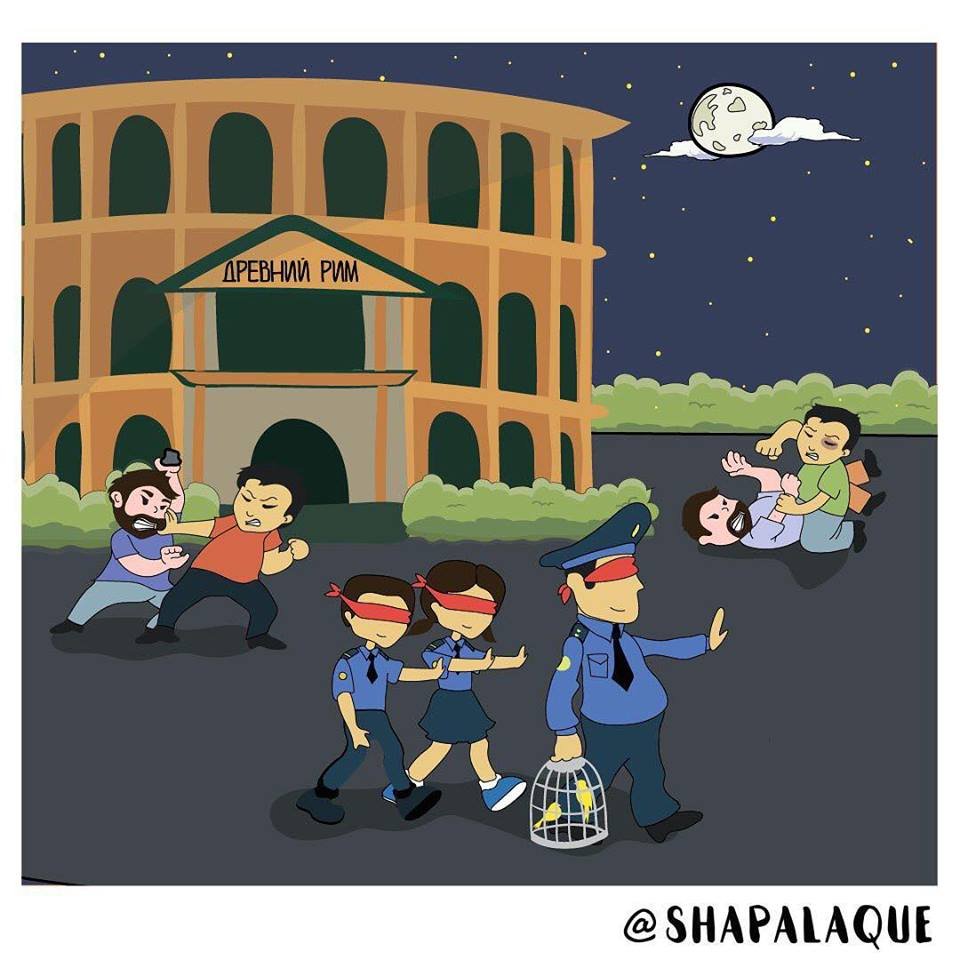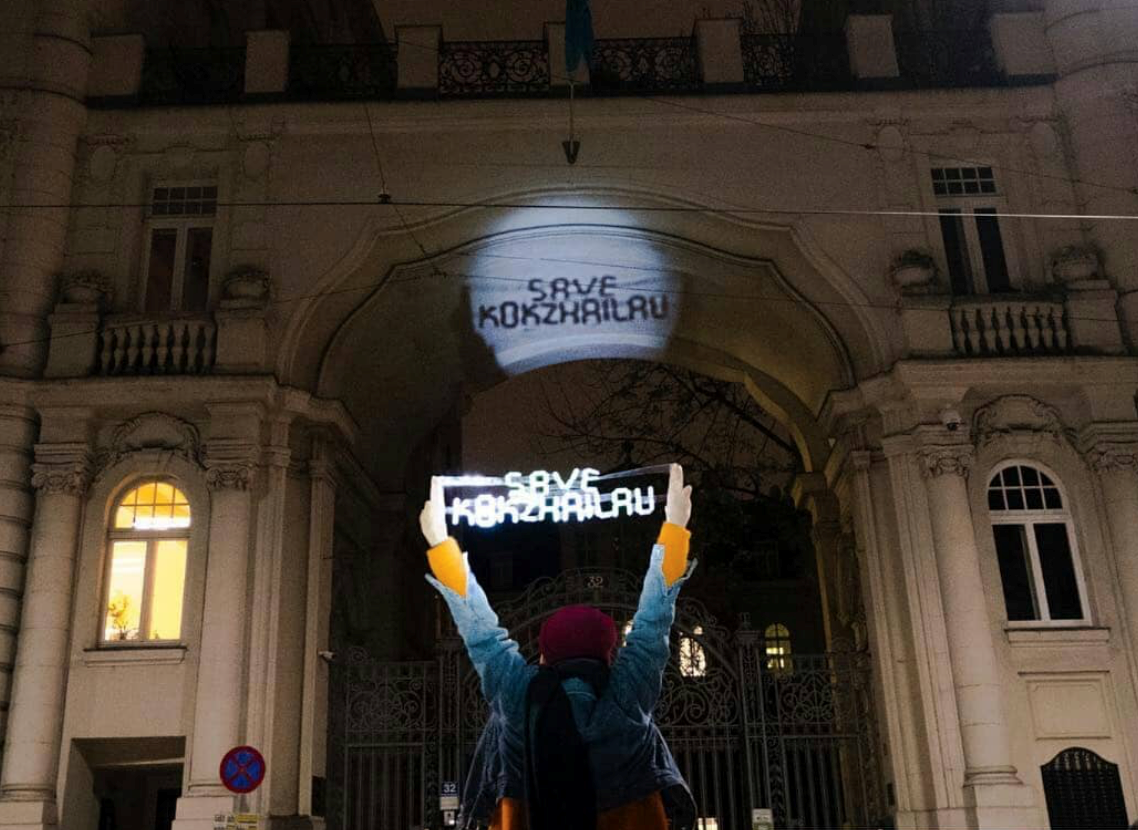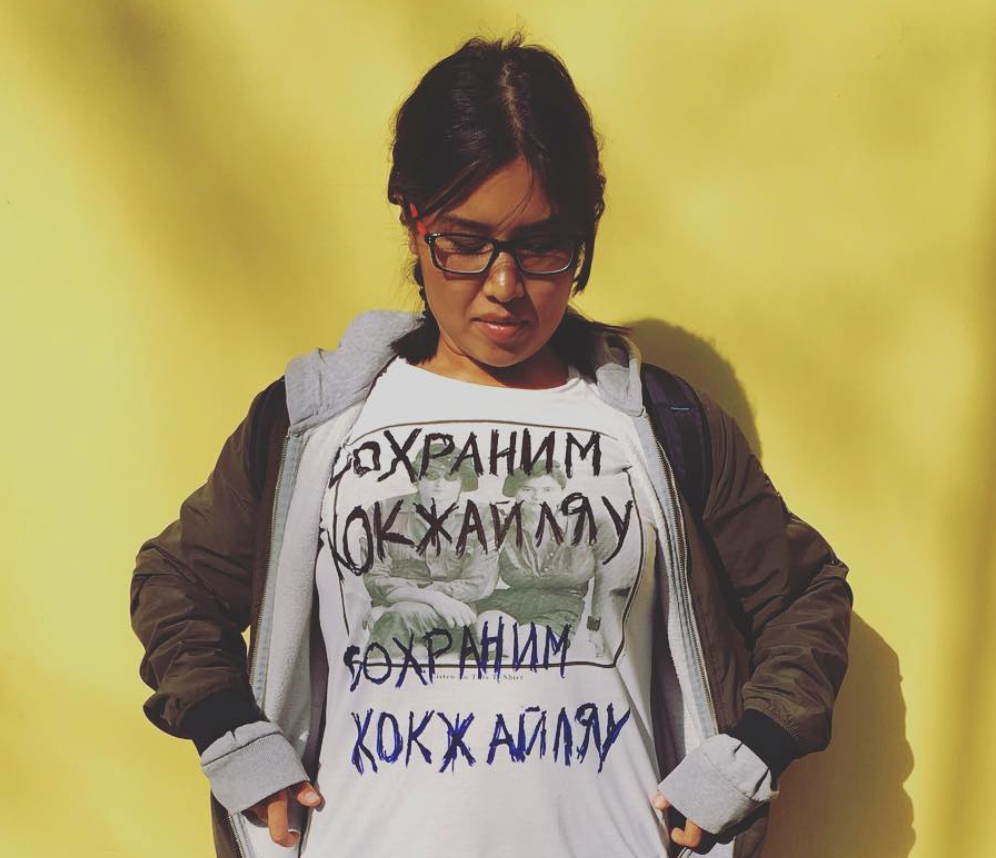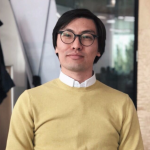The growing popularity of the content created by young bloggers in Kazakhstan implies that coverage of political and socio-economic issues is beginning to sell.
Daniyar Kosnazarov
Social media platforms act as safe spaces with less censorship and government control, giving young activists a unique opportunity to share their political views and interact with their audiences without any mediators. The topics they cover, ranging from urban transportation to corruption and environment, show that creators and audience alike are concerned with national and city-level problems.

Youth and Social Media
According to 2018 figures, citizens aged 14-29 comprise one-fifth of Kazakhstan’s population (21.5 percent or 3.9 million people). While 43 percent of youth live in rural areas, there is continuous migration to cities, stimulated by the desire to find a decent job and take advantage of urban leisure and consumption infrastructure. Socio-economic problems as the low quality of local education, expensive housing, and unemployment push youth to migrate and seek better opportunities.
Millennials and post-millennials can hardly name any official and civic initiatives that target youth.
These problems, according to the director of the Youth Information Service of Kazakhstan, Irina Mednikova, translate into a lack of motivation, political passivity, and paternalism.[iv] Millennials and post-millennials can hardly name any official and civic initiatives that target youth. Even if they have learned about key government strategies, such as “Kazakhstan-2030,” in school or university, they do not consider politicians “role models.”High-ranking officials, in particular, are widely perceived to be corrupt. Although young people are much happier and more optimistic than adults, they are also concerned with rising food prices, university fees, expensive rent prices, and low salaries. These issues might push young men and women in big cities, particularly in the capital, Astana, to participate in mass protests once they become adults and have more responsibilities. Nevertheless, the nationwide results of a Public Opinion Institute and Friedrich Ebert Stiftung survey shows that so far young Kazakh citizens are not interested in taking part in civic initiatives or engaging in politics.
But, compared to their parents, who were born and socialized during the Soviet Union, Kazakh millennials and post-millennials have had greater opportunities to study, travel, and express themselves on social media through art, fiction, or music. Although the state and elites continue to exert strong power over many economic sectors, the younger generations are being raised in a comparatively free country. The high level of Internet penetration, availability of inexpensive smartphones and PCs, and wide variety of social media platforms present vast opportunities to consume global content and interact with locals and foreigners alike.
Kazakh millennials and post-millennials spend a great deal of time online. In this, they are not entirely different from older generations: all in all, 70 percent of the population is now using various social media platforms to chat, share opinions, post photos, or watch videos. The difference is which social media these different generations use: young people aged 18-29 are much more active on vKontakte and Instagram, while their elders prefer MoiMir, Odnoklassniki, and Facebook.
Social media provides one of the few social mobility opportunities available to young people. Given that these creative men and women became popular for their entertaining videos, one might assume that young followers are not interested in consuming political content, but they are in fact not apathetic about what is going on in Kazakhstan.
Young activists on social media
In this article, I look at young activists that use different social media platforms to practice civic activism and increase their followers’ awareness of many political issues in Kazakhstan. Although these content creators and influencers are millennials, a substantial share of their subscribers are post-millennials.
Za Nami Uzhe Vyekhali
Two former journalists, Dmitry Dubovitsky (age 29) and Dmitry Khegai (age 30), decided to launch this YouTube channel in August 2017. Although the first six months were in beta testing mode, their vlogs on contemporary political issues have started to attract the attention of adult viewers, turning these ex-journalists into one of the most popular content-creators in the Kazakhstani blogosphere. Today, they have more than 104,000 subscribers, the vast majority of whom are 18 or older.
The topics of the most popular videos are the possibility of early presidential elections, the bankruptcy of local banks, the illegal behavior of rich kids, the resignation of Nazarbayev’s closest affiliates, the tragic killing of figure skater Denis Ten, security sector reforms, the scenario of Russian secession, etc. By talking about these critical issues, they hope to awaken civic consciousnes.
While declining to frame themselves as political activists, the founders of the channel embrace civic activism. They want ordinary citizens to understand that each political development, from an increase in gasoline prices to the ratification of the Caspian Sea agreement, directly affects their lives. In this respect, the project is driven by a desire to foster individuals’ involvement and interest in political issues. However, they do not agitate people to go into the streets and organize mass demon

strations. The founders affirm that they are not going to join any oppositional forces and do not see any of them as constructive movements.
Murat Daniyar, a 22-year-old Russian-speaking blogger from Almaty, uploaded his first video to YouTube in September 2017. Since then, he has produced 37 videos, prompting 20,925 users to subscribe to his channel, “Jurttyn Balasy” (Other People’s Child). Eighty percent of subscribers are men aged 18-34, mostly from Almaty. Murat does everything alone: he writes scenarios, films footage, and edits.
https://www.youtube.com/channel/UCIlLaUQtcaabbw9-uQysRjw
Murat prioritizes YouTube over other platforms because Instagram is full of “Viners,”people who produce short, fun videos and do not push people to think about social problems. According to him, if one can generate interesting content on YouTube, one easily increases one’s number of followers. Murat describes Kazakhstan’s blogging sphere as sterile and argues that many public figures, particularly famous Viners, are deliberately staying silent on social and political problems. He urges these celebrities to publicly voice political opinions, since millions of young citizens are paying close attention to what they do. He says that it is not a crime to be civically engaged and explicitly opine about the wrongdoings of national or local governing bodies.In his 5-10-minute-long blogs Murat talks about controversial issues and critically examines many sins of contemporary Kazakh society.
His videos are dedicated to the hottest issues, including the renaming of one of the central streets of Almaty to Nazarbayev Avenue, the latinization of the Kazakh alphabet, and public hearings on the construction of a new ski resort in the Kok Zhailau valley. Murat is also critical of some Soviet-style practices that persist in today’s Kazakhstan. Many university students are, for instance, forced to attend official political celebrations as “extras.” The blogger blames city administrations for this and treats the Kok Zhailau case as evidence of a confrontation between civil society and the authorities. He thinks officials should stop treating citizens as mindless “sheeple,” since times have changed and the Soviet Union no longer exists.
Accordingly, the main goal of “Jurttyn balasy” is to raise awareness among young citizens and increase their interest in politics. Although Murat hesitates to call himself a political blogger, he acknowledges that with each passing day the number of videos on his channel about political issues increases.
Launched in March 2017 by several enthusiasts from Astana in their early twenties, Le Shapalaque produces comics and satirical illustrations. Its popular topics include corruption, power relations between the younger generation and their elders in the family and work, the differences between the former capital (Almaty) and the current one (Astana), traditions, popular culture, and everyday practices of ordinary citizens.
With 20,700 followers on Instagram, the Le Shapalaque team argues that social media helps them communicate directly with readers and reach them faster than classical media outlets, including newspapers and television. It is less visible on other social media, with only 1,486 followers on VKontakte, and even fewer on Facebook and Telegram. Half of consumers of Le Shapalaque comics are aged 18-24; they are university students or recent graduates from Almaty, Astana, Shymkent and Karaganda. Just over half are women. According to the creators of the comics, this particular audience prefers Instagram because it is old enough to have left vKontakte, but still too young to be active on Facebook.

While regarding themselves as artists, the goal of the creators of Le Shapalaque is to push people to think critically. For them, it is a political project, but they are hesitant to consider it a form of political activism. When asked about means of engaging in politics, they somewhat sarcastically responded that one needs to be a member of the ruling political party, Nur Otan, hinting that opportunities are scarce for young creative people like them. They have never participated in any political campaigns and contend that politics needs to be fixed.
Also see video: https://youtu.be/dkoqFtHXS_4?t=10
The authorities turn a blind eye to many socio-economic and political problems. Le Shapalaque comics try to create a bond with ordinary citizens by demonstrating that someone else does care about these issues. According to Le Shapalaque founder Adil Zakenov, humor is often the only tool that can help people tackle the world’s toughest challenges.[xv] One of their comics, for instance, describes the career ladder of state employees: first give bribes to access power, then take bribes once in power (see Figure 7). Aware of the legal risks in a country like Kazakhstan, the team members consult with lawyers before publishing some of their works on social media.
#SaveKokZhailau
Environmental issues are becoming a crucial element of youth mobilization. The new generation of activists and influencers is, for instance, calling on social media users to sign a petition against the construction of a ski resort in the mountainous Kok Zhailau area of Almaty that has been lobbied for by local authorities. While activists of different ages and backgrounds are united against this expensive initiative, the engagement of the #SaveKokZhailau team could be seen as a turning point. Their publications on Instagram helped to collect over 33,000 signatures after the online petition was launched at the beginning of November 2018. Although the final decision has not yet been made, local authorities have been forced to use different tactics to accommodate these protests. In early December, Almaty mayor Baurzhan Baybek said that the authorities had taken into consideration all critical remarks and suggestions coming from civil society and had decided to make certain changes, such as decreasing the area of deforestation.
Responding to some of the skeptics, art-activist Suinbike Suleimenova (age 25) argues that the Instagram hype around Kok Zhailau is “returning voices, rights, and freedom to the people,” as many citizens are fed up with being silent. Instagram is a “virtual square” that allows people to gather, rise up, and talk about important things.[xvii]
Madina Mussina, an Instagram influencer, invites her 72,100 followers to share posts about “Save Kok Zhailau.” According to Mussina, times have changed: applying Soviet-era style methods of scaremongering and treating people as a “herd of sheep” no longer works. In the era of digital technology, social media, and a diversity of information sources, there is a need for an open and sincere dialogue between society and rulers.
Mussina calls herself a citizen with soul, feeling, and opinion. She does not want to be afraid of sharing her point of view, since she is “not agitating for violence, drug abuse and murder, but for preserving nature.” What she cares about is protecting the environment and preventing the implementation of the “crazy ideas of fat men with a lot of money.” She criticizes celebrities and so-called “opinion leaders” for abstaining from sharing their own views on Kok Zhailau. Mussina argues that there is no need to organize or attend street protests, since social media can help pressure the authorities with no more than a click.
Following Madina Mussina, 30-year-old actress and Instagram influencer Aisulu Azimbayeva (96,600 subscribers) has at least once urged her followers to assert themselves and defend Kok Zhailau against “rich men who do not care about the people.”
To complement this Instagram activism, young artists Anvar Musrepov and Nazira Karimova staged a performance near the Embassy of Kazakhstan in Vienna at the beginning of November 2018. They protested against the ski resort by organizing a “luminiscent picket.”
On his Instagram account, Musrepov explained that the government of Kazakhstan has never considered the opinion of ordinary citizens and only cares about its international image.
In November 2018, a group of Kazakh students gathered in Times Square to raise global awareness about Kok Zhailau and show solidarity with their fellows in Kazakhstan. To be heard and to avoid being sentenced for protesting by Kazakhstan’s law enforcement agencies, young activists choose foreign cities, such as Vienna or New York, for their street actions.
Conclusion
Even as the Kazakh authorities are refashioning the content of state-owned TV channels, using social media, and appointing younger bureaucrats to the ministries and agencies that curate so-called “ideological work,” millennials’ and post-millennials’ lack of trust in official institutions persists. The political indifference of young citizens is driven by fear of organizing and attending mass demonstrations, as well as by a lack of faith that the government will listen to their claims.
Even if the Kazakhstani youth is largely apolitical, their very ignorance and lack of respect for the authorities is, in essence, an unconscious political attitude that limits the impact of state propaganda. On the eve of a presidential transition, Akorda authorities are faced with the serious challenge of finding a common language with the country’s youth, which seems to be slowly entering a new era of at least partial civic activism.
 Daniyar Kosnazarov was a visiting fellow at The George Washington University. He is also the Editor-in-Chief of Steppe, an independent digital media outlet in Kazakhstan. He has experience both in the government and in private think tanks in Kazakhstan, and previously worked as Chair of the Department of Strategic Analysis at Narxoz University, evaluating strategy implementation.
Daniyar Kosnazarov was a visiting fellow at The George Washington University. He is also the Editor-in-Chief of Steppe, an independent digital media outlet in Kazakhstan. He has experience both in the government and in private think tanks in Kazakhstan, and previously worked as Chair of the Department of Strategic Analysis at Narxoz University, evaluating strategy implementation.
